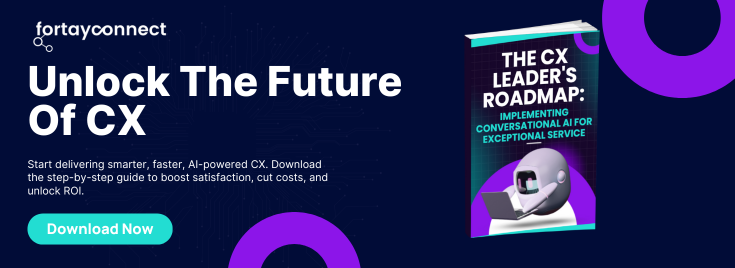
Omnichannel Self-Assessment: 20 Questions On How To Improve Omnichannel Customer Experience
Posts By Topics
- News (16)
- Ring Central (13)
- Unified Communications (13)
- Events (12)
- Zoom (10)
- Contact Centre (9)
- Avaya (7)
- GoToConnect (7)
- Partners (6)
- CX (5)
- Resources (5)
- Case Studies (4)
- Unified Communications Solutions (4)
- Contact Centre Consulting (3)
- Conversational Intelligence (2)
- Microsoft Teams (2)
- Trends (2)
- Video (2)
- AI Companion (1)
- AI Meeting Assistant (1)
- AI Sales Analytics (1)
- Chatbot (1)
- DialPad (1)
- Employee Communications (1)
- Neurodiversity (1)
- Omnichannel (1)
- Sentiment Analysis (1)
- Virtual Agent (1)
- workvivo (1)
Omnichannel Self-Assessment: 20 Questions On How To Improve Omnichannel Customer Experience
The biggest CX buzzword of the last decade has to be “omnichannel”. But for most businesses, the reality is still a patchwork of siloed channels, frustrated customers, and agents stuck toggling between screens.
So, is omnichannel important? The short answer: it’s not just important—it’s critical. But only if you do it right, with the latest technology and a relentless focus on seamless, hyper-personalised journeys.
Why Omnichannel Matters—Now More Than Ever
Today’s customers are digital natives, channel-agnostic, and have zero patience for friction. Research shows that 82% of businesses see omnichannel as the technology with the most positive impact on customer experience. Yet, only 22% of contact centres self-identify as such.
The gap isn’t just about technology—it’s about delivering on the promise: no more repeating information, no more starting over, and no more “please hold while I transfer you.”
What’s Changed?
Next-gen omnichannel platforms like Zoom Contact Centre and NICE CXone are finally delivering on the promise.
These solutions unify every channel—voice, chat, SMS, video, social—into a single, AI-powered journey. Agents get a real-time, 360° view of the customer. Customers get frictionless, proactive, and personalised service.
The Omnichannel Self-Assessment: 20 Questions Every CX Leader Should Be Asking
- Do we truly understand our customer journey across every channel?
- Have we mapped every touchpoint, pain point, and “moment of truth” for different demographics and scenarios?
- Is our customer data unified and accessible in real time, regardless of channel?
- Can agents and self-service tools access a single, up-to-date view of the customer, or do silos and legacy systems still hold us back?
- Can customers switch channels—say, from chat to phone to video—without repeating themselves or losing context?
- Does our technology support seamless escalation and context transfer across all touchpoints?
- Are we using AI and automation to proactively engage customers and resolve issues before they escalate?
- Do we leverage AI-powered virtual agents, outbound messaging, and predictive analytics to anticipate and meet customer needs?
- Is every interaction—no matter the channel—personalised, fast, and on-brand?
- Are we using data and analytics to tailor experiences and maintain consistent branding and user experience across all platforms?
- Do our agents have the tools and training to deliver unified, high-quality service across channels?
- Are we empowering agents with real-time AI assistance, knowledge bases, and unified desktops to reduce after-call work and handle complex queries?
- Are we measuring what matters?
- Do we track first-contact resolution, channel-switching rates, customer satisfaction, and journey analytics to identify bottlenecks and opportunities for improvement?
- Is our omnichannel strategy flexible and future-proof?
- Can we easily add new channels, integrate emerging technologies, and adapt to changing customer expectations without major disruption?
- Do we regularly collect and act on customer feedback across all channels?
- Are we using surveys, sentiment analysis, and direct input to continuously refine our approach?
- Are we breaking down organisational silos to deliver a seamless customer experience?
- Do CX, IT, and operations collaborate on omnichannel initiatives, or are business processes still fragmented?
If you answered “no” or “not sure” to any of these, your omnichannel customer experience isn’t just improvable—it’s a strategic imperative.
The Real-World Impact: What Next-Gen Omnichannel Looks Like
- Zoom Contact Centre empowers agents with real-time AI assistance, automatic summaries, and seamless escalation from chat or social to phone or video, reducing after-call work and boosting satisfaction.
- NICE CXone unifies customer analytics, omnichannel routing, workforce engagement, and AI on a single cloud platform—delivering proactive, hyper-personalised journeys and enabling agents to focus on complex, high-value interactions.
- Customer preferences are shifting: Web chat and social media are growing fast, but voice remains critical for high-emotion and high-complexity scenarios. The key is orchestrating all channels, not just adding more.
The Bottom Line: Omnichannel Is Non-Negotiable
Omnichannel customer experience isn’t just important—it’s the foundation for loyalty, efficiency, and growth. Customers want to feel known and supported, no matter where they start or finish their journey. The businesses that get it right win trust, reduce costs, and outpace the competition.
Ready To Move From Theory To Action?
Fortay Connect partners with leading platforms like Zoom, NICE and Genesys to help businesses design, deploy, and optimise next-gen omnichannel strategies—so you can finally deliver the seamless, personalised experiences your customers expect.
Book a meeting with our head of CX here.
Posts By Topics
- News (16)
- Ring Central (13)
- Unified Communications (13)
- Events (12)
- Zoom (10)
- Contact Centre (9)
- Avaya (7)
- GoToConnect (7)
- Partners (6)
- CX (5)
- Resources (5)
- Case Studies (4)
- Unified Communications Solutions (4)
- Contact Centre Consulting (3)
- Conversational Intelligence (2)
- Microsoft Teams (2)
- Trends (2)
- Video (2)
- AI Companion (1)
- AI Meeting Assistant (1)
- AI Sales Analytics (1)
- Chatbot (1)
- DialPad (1)
- Employee Communications (1)
- Neurodiversity (1)
- Omnichannel (1)
- Sentiment Analysis (1)
- Virtual Agent (1)
- workvivo (1)



